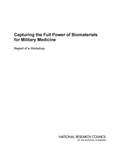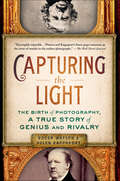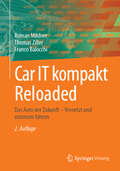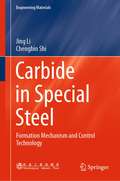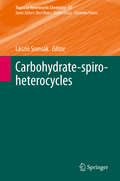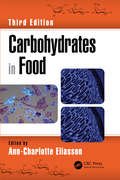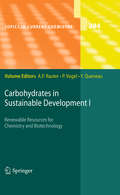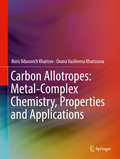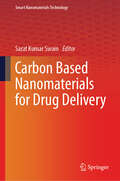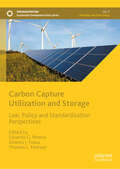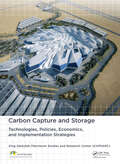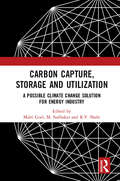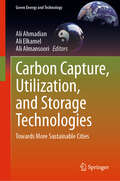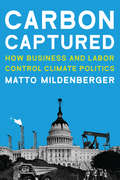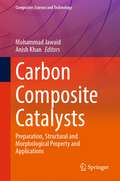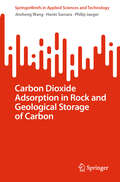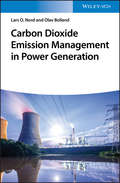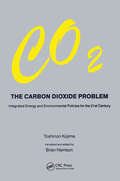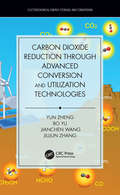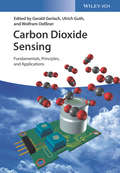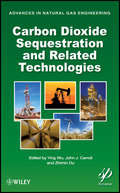- Table View
- List View
Capturing the Full Power of Biomaterials for Military Medicine: Report of a Workshop
by Committee on Capturing the Full Power of Biomaterials for Military Medical NeedsRecent results in biomaterials R&D suggest that there are exceptional opportunities for these emerging materials in military medicine. To facilitate this possibility, the National Research Council convened a workshop at the request of the Department of Defense to help create a technology development roadmap to enhance military R&D into biomaterials technology. The workshop focused primarily on identifying useful near- and mid-term applications of biomaterials including wound care, tissue engineering, drug delivery, and physiological sensors and diagnostics. This report presents a summary of the workshop. It provides a review of biomaterials and their importance to military medicine, the roadmap, and a discussion of ways to enable biomaterials development. Several important outcomes of successful capture of potential benefits of these materials are also discussed.
Capturing the Light: The Birth of Photography, a True Story of Genius and Rivalry
by Helen Rappaport Roger WatsonAn intimate look at the journeys of two men—a gentleman scientist and a visionary artist—as they struggled to capture the world around them, and in the process invented modern photographyDuring the 1830s, in an atmosphere of intense scientific enquiry fostered by the industrial revolution, two quite different men—one in France, one in England—developed their own dramatically different photographic processes in total ignorance of each other's work. These two lone geniuses—Henry Fox Talbot in the seclusion of his English country estate at Lacock Abbey and Louis Daguerre in the heart of post-revolutionary Paris—through diligence, disappointment and sheer hard work overcame extraordinary odds to achieve the one thing man had for centuries been trying to do—to solve the ancient puzzle of how to capture the light and in so doing make nature 'paint its own portrait'. With the creation of their two radically different processes—the Daguerreotype and the Talbotype—these two giants of early photography changed the world and how we see it. Drawing on a wide range of original, contemporary sources and featuring plates in colour, sepia and black and white, many of them rare or previously unseen, Capturing the Light by Roger Watson and Helen Rappaport charts an extraordinary tale of genius, rivalry and human resourcefulness in the quest to produce the world's first photograph.
Car (How It's Built)
by Becky HerrickKids are fascinated by how things are constructed, especially big things!This brand-new STEM (science, technology, engineering, and mathematics) series will take readers on visits to various work sites so they can see exactly How It’s Built! Kids will follow along as a small group of fictional characters get to find out exactly what it takes to build things that they probably see all the time, like bridges, houses, boats, and cars, to things that they might dream of being inside, like skyscrapers and rockets.
Car IT kompakt Reloaded: Das Auto der Zukunft – Vernetzt und autonom fahren
by Roman Mildner Thomas Ziller Franco BaiocchiDie vielen neuen Funktionen, die im vernetzten Auto Realität werden, finden Sie in diesem Buch übersichtlich beschrieben. Dabei geht es von der Einbindung von Google und Facebook bis hin zu Diensten, die Ihnen helfen Ihren Parkplatz wiederzufinden, per App Ihr Auto einzuparken oder das Sonnendach aus der Ferne zu schließen, wenn es regnet. Als Ziel dieser Entwicklung wird das autonome Fahren definiert inklusive aktueller Entwicklungen, Implementierungsvarianten und den wesentlichen Herausforderungen bezüglich der Sicherheit und Rechtslage. Das Buch gibt darüber hinaus Auskunft zu notwendigen Qualitätsstandards in der Entwicklung komplexer Fahrzeug-IT-Systeme. Zum Abschluss werden die Auswirkungen auf Wirtschaft, Gesellschaft und Politik beschrieben. Dabei werden speziell Fahrzeugnutzer sowie Fahrzeughersteller und ihre Lieferanten berücksichtigt.
Carbide in Special Steel: Formation Mechanism and Control Technology (Engineering Materials)
by Jing Li Chengbin ShiThis book summarizes the research results of carbide control in special steel from the authors. It includes the evolution and control of carbide in special steel in the process of electroslag remelting, rolling, and heat treatment, as well as the effect of alloying treatment (rare earth, magnesium, nitrogen, titanium) as heterogeneous nucleating agent on the carbides in special steel. It helps the readers to understand the formation mechanism and control technology of carbide in special steel deeply for improving the quality of special steel further. The book is useful as a reference for researchers, practitioners, teachers, and engineering management team in the fields of metallurgy and materials.
Carbohydrate Polymer Nanotechnologies: Design, Development, Utilization and Perspectives (Smart Nanomaterials Technology)
by Madhusudhan Alle Kummari S. V. Krishna Rao K. V. N. Suresh ReddyThis book emphasizes the recent advances in carbohydrate polymer nanotechnologies, especially discusses the applications, limitations and drawbacks, revealing directions to carbohydrate polymer nanoparticles and their nanocomposites for further use in various applications. Carbohydrate polymers and natural materials which are environmentally benign over the synthetic polymers and display potential features such as low cost, wide availability, biocompatibility, biodegradability, physico-mechanical properties and easy functionalization. The carbohydrate polymers consists of significant functions groups, i.e., hydroxy, amine and carboxylic acid, these allows the functional modification and metal nanoparticle anchoring via chemical reaction and physico-chemical interactions, respectively; which results in the formation of sustainable materials with tunable features. In addition, the chapters in the book looks into the synthesis, functionalization and characterization of various carbohydrate polymers and their nanocomposites and its commercial applications such as pharmaceutical, environmental and energy production being conducted across the world. More specifically, it covers the application of carbohydrate polymer-based nanomaterials as sensors, drug delivery devises, nanomedicine, food packing, environmental remediation, fuel cells, hydrogen storage. The content of this book appeals to graduate students and researchers from the discipline of nano sciences, carbohydrate polymers, biotechnology, nanotechnology.
Carbohydrate-spiro-heterocycles (Topics in Heterocyclic Chemistry #57)
by László SomsákThis volume is devoted to compounds in which the spiro centre is part of a pyranoid or furanoid or an iminosugar ring. The chapters contributed deal with methodological peculiarities of syntheses of natural and artificial sugar derived spirocycles as well as their biological applications and other utilities including marketed drugs. Carbohydrates are ubiquitous molecules in nature and participate in a vast number of biological interactions. Especially their conjugates with practically all kinds of primary and secondary metabolic small molecules (and also biomacromolecules) representing valuable tools for glycobiology research and also lead compounds for drug discovery. While monosaccharides per se appear as heterocycles, their natural conjugates frequently exhibit spiro(hetero)cyclic derivatives, in many cases of high therapeutical relevance. As a consequence, the field of carbohydrate-spiro-heterocycles attracts intense interest from both chemical and biomedical aspects therefore this volume will be of interest for synthetic and medicinal chemists and (glyco)biologists, as well as researchers involved in various biomedical fields.
Carbohydrates in Food
by Ann-Charlotte EliassonCarbohydrates in Food, Third Edition provides thorough and authoritative coverage of the chemical analysis, structure, functional properties, analytical methods, and nutritional relevance of monosaccharides, disaccharides, and polysaccharides used in food. Carbohydrates have become a hot topic in the debate about what to eat. This new edition includes increased treatment of resistant starch, dietary fiber, and starch digestion, especially in relation to different diets, suggesting that carbohydrate consumption should be reduced. New to the Third Edition: Explains how models for starch molecules have been improved recently leading to clearer understanding Discusses the growing interest in new sources of carbohydrates, such as chitosan and fructans, because of their function as prebiotics Features the latest developments on research into dietary fiber and starch digestion Carbohydrates in Food, Third Edition combines the latest data on the analytical, physicochemical, and nutritional properties of carbohydrates, offering a comprehensive and accessible single source of information. It evaluates the advantages and disadvantages of using various analytical methods, presents discussion of relevant physicochemical topics that relate to the use of carbohydrates in food that allow familiarity with important functional aspects of carbohydrates; and includes information on relevant nutritional topics in relation to the use of carbohydrates in food.
Carbohydrates in Sustainable Development II (Topics in Current Chemistry #294)
by Amélia P. Rauter Pierre Vogel Yves QueneauKnoevenagel Reaction of Unprotected Sugars, By M.-C. Scherrmann ; Carbohydrate-Based Lactones: Synthesis and Applications, By N. M. Xavier, A. P. Rauter, and Y. Queneau; Heterogeneously-Catalyzed Conversion of Carbohydrates, By K. De Oliveira Vigier and F. Jérôme; Palladium-Catalyzed Telomerization of Butadiene with Polyols: From Mono to Polysaccharides, By S. Bouquillon, J. Muzart, C. Pinel, and F. Rataboul; Monosaccharides, By J.A. Galbis and M.G. García-Martín; Natural Sources, By L. Weignerová and V. Křen; Synthesis and Applications of Ionic Liquids Derived from Natural Sugars; By C. Chiappe, A. Marra, and A. Mele
Carbon Allotropes and Composites: Materials for Environment Protection and Remediation
by Chaudhery Mustansar Hussain Chandrabhan VermaCARBON ALLOTROPES and COMPOSITES The book discusses the most recent developments and trends in the use of carbon allotropes and their composites for environmental restoration and protection including synthesis, characterization and applications. Due to their huge surface area and numerous other distinguishing characteristics, nanostructure materials are widely used in a variety of applications. The production of substrates for better environmental protection and cleanup has been prompted by these qualities. They offer a superior surface for the adsorption of impurities and pollutants that contaminate industrial eff luents, wastewater, air, and soil. These all include a variety of harmful environmental substances such as toxic metals, phenolic compounds, dyes, and other substances that must be treated appropriately before being released into the environment. Composites made of highly efficient and relatively noble carbon allotropes are attracting significant attention for environmental protection and restoration. The use of carbon allotropes offers many benefits, including low cost, low toxicity, simple manufacture, and high efficiency. Therefore, they are ideal replacements for previously established materials. Carbon Allotropes and Composites is one of the first books on carbon allotropes and their composites in environmental protection and remediation, and features a description of CO2 capturing capability. Audience The book is designed for a broad audience working in the fields of materials science and engineering, nanotechnology, energy, environmental chemistry, environmental science, etc.
Carbon Allotropes: Metal-Complex Chemistry, Properties and Applications
by Oxana Vasilievna Kharissova Boris Ildusovich KharisovThis book provides a detailed description of metal-complex functionalized carbon allotrope forms, including classic (such as graphite), rare (such as M- or T-carbon), and nanoforms (such as carbon nanotubes, nanodiamonds, etc.). Filling a void in the nanotechnology literature, the book presents chapters generalizing the synthesis, structure, properties, and applications of all known carbon allotropes. Metal-complex composites of carbons are described, along with several examples of their preparation and characterization, soluble metal-complex carbon composites, cost-benefit data, metal complexes as precursors of carbon allotropes, and applications. A lab manual on the synthesis and characterization of carbon allotropes and their metal-complex composites is included.
Carbon Based Nanomaterials for Drug Delivery (Smart Nanomaterials Technology)
by Sarat Kumar SwainThis book comprehensively reviews the incorporation of different types of carbon-based nanomaterials for application in targeted and controlled drug delivery systems. Carbon-based nanomaterials play a vital role as vectors and scaffolds during drug delivery owing to their ultra-small size, non-toxicity, and high water solubility. The chapters in this book present the use of different carbon-based nanomaterials (such as graphene, carbon quantum dots, carbon nanotubes, fullerenes, and carbon nanofibers) into polymeric and polysaccharide-based matrices for the designing of effective drug delivery vehicles which demonstrate superior performance compared to traditional drug delivery systems. In particular, it demonstrates the incorporation of carbon-based nanomaterials into supramolecular drug delivery systems leading to improved drug delivery properties. This book aims to be a reference for researchers and scientists interested in new nanomaterials for drug delivery applications.
Carbon Capture Utilization and Storage: Law, Policy and Standardization Perspectives (Sustainable Development Goals Series)
by Eduardo G. Pereira Alberto J. Fossa Thomas L. MuinzerThis book delves into how carbon capture, utilization, and storage (CCUS) technologies might help accelerate the worldwide transition to sustainable energy while meeting Paris Agreement targets. This comprehensive handbook examines how governments, businesses, and society may effectively implement CCUS programs to cut carbon emissions and promote economic development. The book begins with basic ideas and exposes readers to CCUS technologies and their critical role in reaching net-zero emissions by 2050. It investigates successful CCUS installations from various countries and suggests prospects for host governments and energy firms. The book combines technical innovation and carbon neutrality initiatives, while also addressing regulatory frameworks and normative factors that are critical for wider acceptance. With climate change mitigation at its core, the book offers pragmatic recommendations for policymakers and industry leaders on how to employ CCUS for sustainable development, making it a valuable resource for environmental researchers, energy professionals, and policymakers working toward a low-carbon economy.
Carbon Capture and Storage: Technologies, Policies, Economics, and Implementation Strategies
by King Abdullah Petroleum Studies Saud M. Al-Fattah Murad F. Barghouty Bashir O. DabbousiThis book focuses on issues related to a suite of technologies known asCarbon Capture and Storage (CCS), which can be used to capture and store underground large amounts of industrial CO2 emissions. It addresses how CCS should work, as well as where, why, and how these technologies should be deployed, emphasizing the gaps to be filled in terms o
Carbon Capture, Storage and Utilization: A Possible Climate Change Solution for Energy Industry
by M. Sudhakar Malti Goel R. V. ShahiCarbon capture and storage (CCS) is among the advanced energy technologies suggested to make the conventional fossil fuel sources environmentally sustainable. It is of particular importance to coal-based economies. This book deals at length with the various aspects of carbon dioxide capture, its utilization and takes a closer look at the earth processes in carbon dioxide storage. It discusses potential of Carbon Capture, Storage, and Utilization as innovative energy technology towards a sustainable energy future. Various techniques of carbon dioxide recovery from power plants by physical, chemical, and biological means as well as challenges and prospects in biomimetic carbon sequestration are described. Carbon fixation potential in coal mines and in saline aquifers is also discussed. Please note: This volume is Co-published with The Energy and Resources Institute Press, New Delhi. Taylor & Francis does not sell or distribute the Hardback in India, Pakistan, Nepal, Bhutan, Bangladesh and Sri Lanka
Carbon Capture, Utilization, and Storage Technologies: Towards More Sustainable Cities (Green Energy and Technology)
by Ali Elkamel Ali Ahmadian Ali AlmansooriThis book brings together cross-disciplinary research on carbon capture, utilization, and storage (CCUS) to examine the impact of implementing CCUS tools and technologies on emissions reduction and sustainable development in cities and large metropolitan areas. An expert group of global contributors provides in-depth technical discussions, case studies, and examples with an emphasis on the worldwide application of the latest developments in technology, protocols, implementation, and application of CCUS in power and energy systems.Carbon Capture, Utilization, and Storage Technologies: Towards More Sustainable Cities is an essential multidisciplinary reference for researchers and industry practitioners from engineering, energy, computer science, data science, economics, and operational research working in the energy and environmental fields.
Carbon Captured: How Business and Labor Control Climate Politics (American and Comparative Environmental Policy)
by Matto MildenbergerA comparative examination of domestic climate politics that offers a theory for cross-national differences in domestic climate policymaking.Climate change threatens the planet, and yet policy responses have varied widely across nations. Some countries have undertaken ambitious programs to stave off climate disaster, others have done little, and still others have passed policies that were later rolled back. In this book, Matto Mildenberger opens the “black box” of domestic climate politics, examining policy making trajectories in several countries and offering a theoretical explanation for national differences in the climate policy process.Mildenberger introduces the concept of double representation—when carbon polluters enjoy political representation on both the left (through industrial unions fearful of job loss) and the right (through industrial business associations fighting policy costs)—and argues that different climate policy approaches can be explained by the interaction of climate policy preferences and domestic institutions. He illustrates his theory with detailed histories of climate politics in Norway, the United States, and Australia, along with briefer discussions of policies in in Germany, Japan, the United Kingdom, and Canada. He shows that Norway systematically shielded politically connected industrial polluters from costs beginning with its pioneering carbon tax; the United States, after the failure of carbon reduction legislation, finally acted on climate reform through a series of Obama administration executive actions; and Australia's Labor and Green parties enacted an emissions trading scheme, which was subsequently repealed by a conservative Liberal party government. Ultimately, Mildenberger argues for the importance of political considerations in understanding the climate policymaking process and discusses possible future policy directions.
Carbon Composite Catalysts: Preparation, Structural and Morphological Property and Applications (Composites Science and Technology)
by Mohammad Jawaid Anish KhanThis book provides an overview of the fundamentals and recent advances in the field of carbon composite catalysts, including graphene, carbon nanotubes, mesoporous carbons, graphitic carbon nitrides, and related composites. Special focus is placed on their controllable preparation and applications in the gas phase, liquid phase, electrochemical, and photocatalytic reactions, as well as defect and surface chemistry-related catalytic activities of carbon materials. Some perspectives are highlighted on the development of more efficient carbonaceous catalysts featuring high stability, low cost, optimized structures, and enhanced performance, which are the key factors to accelerate the designed preparation and commercialization of carbon composite catalysts. The book will also present the latest studies of carbon-based composite catalysts for clean energy change and storage, nature protection, and essential industrial production and storage and include the key challenges and future opportunities in this exciting field.
Carbon Dioxide Adsorption in Rock and Geological Storage of Carbon (SpringerBriefs in Applied Sciences and Technology)
by Jinsheng Wang Hanin Samara Philip JaegerThis book describes the adsorption of carbon dioxide (CO2) by rocks. Carbon dioxide adsorption may play an important role in the geological storage of CO2, an essential component of carbon capture and storage (CCS) for achieving zero and negative carbon emissions to the atmosphere. Adsorption has wide applications elsewhere in industry. However, it has not received significant attention for its potential for CO2 storage, likely because the importance of CO2 adsorption on rocks is not widely recognized. This book not only raises awareness of the importance of CO2 adsorption in CO2 storage, but also provides useful tools for research and development for the early deployment of CCS to contribute to the Paris Agreement goal of limiting global temperature rises.
Carbon Dioxide Emission Management in Power Generation
by Prof. Lars O. Nord Prof. Olav BollandProvides an engaging and clearly structured source of information on the capture and storage of CO2 Designed to bridge the gap between the many disciplines involved in carbon dioxide emission management, this book provides a comprehensive yet easy-to-understand introduction to the subject of CO2 capture. Fit for graduate students, practicing process engineers, and others interested in the subject, it offers a clear understanding and overview of thermal power plants in particular and of carbon dioxide capture and storage (CCS) in general. Carbon Dioxide Emission Management in Power Generation starts with a discussion of the greenhouse effect, climate change, and CO2 emissions as the rationale for the concept of CCS. It then looks at the long-term storage of CO2. A chapter covering different fossil fuels, their usage, and properties comes next, followed by sections on: CO2 generation, usage and properties; power plant technologies; theory of gas separation; power plant efficiency calculations; and classification of CO2 capture methods. Other chapters examine: CO2 capture by gas absorption and other gas separation methods; removing carbon from the fuel; pre- and post-combustion CO2 capture in power cycles; and oxy-combustion CO2 capture in power cycles. -Discusses both CO2 capture technologies as well as power generation technologies -Bridges the gap between many different disciplines?from scientists, geologists and engineers, to economists -One of the few books that covers all the different sciences involved in the capture and storage of CO2 -Introduces the topic and provides useful information to the academic as well as professional reader Carbon Dioxide Emission Management in Power Generation is an excellent book for students who are interested in CO2 capture and storage, as well as for chemists in industry, environmental chemists, chemical engineers, geochemists, and geologists.
Carbon Dioxide Problem: Integrated Energy and Environmental Policies for the 21st Century
by Toshinori KojimaThe problems of global warming and environmental pollution are some of the most difficult challenges this planet faces in the 21st century. Carbon dioxide, often identified as one of the culprits, is an inevitable product of the combustion of fossil fuels, necessary for our modern economies to survive. Thus, The Carbon Dioxide Problem refers to the extremely complex matter of limiting carbon dioxide concentrations to levels that pose little environmental risk without devastating national economies and reducing living standards on the planet. This timely book offers solutions to the global warming problem that lie in the development of comprehensive energy and environmental policies that emphasize the need to use energy efficiently while looking to develop alternative renewable sources. The experience of Japan is particularly relevant due to that country's great dependence on foreign fuel supplies, which has led it to be at the forefront of developing new energy conservation and antipollution technologies.
Carbon Dioxide Reduction through Advanced Conversion and Utilization Technologies (Electrochemical Energy Storage and Conversion)
by Bo Yu Jiujun Zhang Yun Zheng Jianchen WangCarbon Dioxide Reduction through Advanced Conversion and Utilization Technologies covers fundamentals, advanced conversion technologies, economic feasibility analysis, and future research directions in the field of CO2 conversion and utilization. <P><P>This book emphasizes principles of various conversion technologies for CO2 reduction such as enzymatic conversion, mineralization, thermochemical, photochemical, and electrochemical processes. It addresses materials, components, assembly and manufacturing, degradation mechanisms, challenges, and development strategies. Applications of conversion technologies for CO2 reduction to produce useful fuels and chemicals in energy and industrial systems are discussed as solutions to reduce greenhouse effects and energy shortages. Particularly, the advanced materials and technology of high temperature co-electrolysis of H2O and CO2 to produce sustainable fuels using solid oxide cells (SOCs) are reviewed and the introduction, fundamentals, and some significant topics regarding this CO2 conversion process are discussed. <P><P>This book provides a comprehensive and clear picture of advanced technologies in CO2 conversion and utilization. Written in a clear and detailed manner, it is suitable for students as well as industry professionals, researchers, and academics.
Carbon Dioxide Sensing: Fundamentals, Principles, and Applications
by Gerald Gerlach Ulrich Guth Wolfram OelßnerThe book provides the reader with a profound knowledge of basic principles, properties and preferred applications of diverse kinds of CO2 measurement. It shows the advantages, disadvantages and limitations of several methods and gives a comprehensive overview of both possible applications and corresponding boundary conditions. Applications reach from environmental monitoring to safety control to biotechnology and food control and finally to medicine.
Carbon Dioxide Sequestration and Related Technologies
by John J. Carroll Zhimin Du Ying WuCarbon dioxide sequestration is a technology that is being explored to curb the anthropogenic emission of CO2 into the atmosphere. Carbon dioxide has been implicated in the global climate change and reducing them is a potential solution.The injection of carbon dioxide for enhanced oil recovery (EOR) has the duel benefit of sequestering the CO2 and extending the life of some older fields. Sequestering CO2 and EOR have many shared elements that make them comparable.This volume presents some of the latest information on these processes covering physical properties, operations, design, reservoir engineering, and geochemistry for AGI and the related technologies.
Carbon Dioxide Thermodynamic Properties Handbook: Covering Temperatures from -20° to 250°C and Pressures up to 1000 Bar
by John J. Carroll Sara AnwarWith new graphical data added to this revision of the original classic, this volume is still the largest and most comprehensive collection of thermodynamic data on carbon dioxide ever produced, the ONLY book of its kind in print. With carbon dioxide sequestration gaining in popularity around the world in the scientific and engineering communities, having this data in an easy-to-access format is more useful and timely than ever. With data that is accurate down to within a fraction of a degree, this handbook offers, in one volume, literally thousands of data points that any engineer or chemist would need when dealing with carbon dioxide. Not available in other formats, these easy-to-read tables are at your fingertips and are accessed within seconds and does away with the need for constantly working with mathematical formulas. Carbon dioxide is used in many fields, across many industries, including the oil and gas industry and food processing. Even coffee is decaffeinated using carbon dioxide! Though CO2 has many uses in industry, it is also one of the most offensive of the greenhouse gases, on which many scientists and engineers are working to eradicate in the future production of power and fuel. This data is useful for any scientist or engineer in any of these fields, but it is also useful for the chemical engineering or petroleum engineering student.
